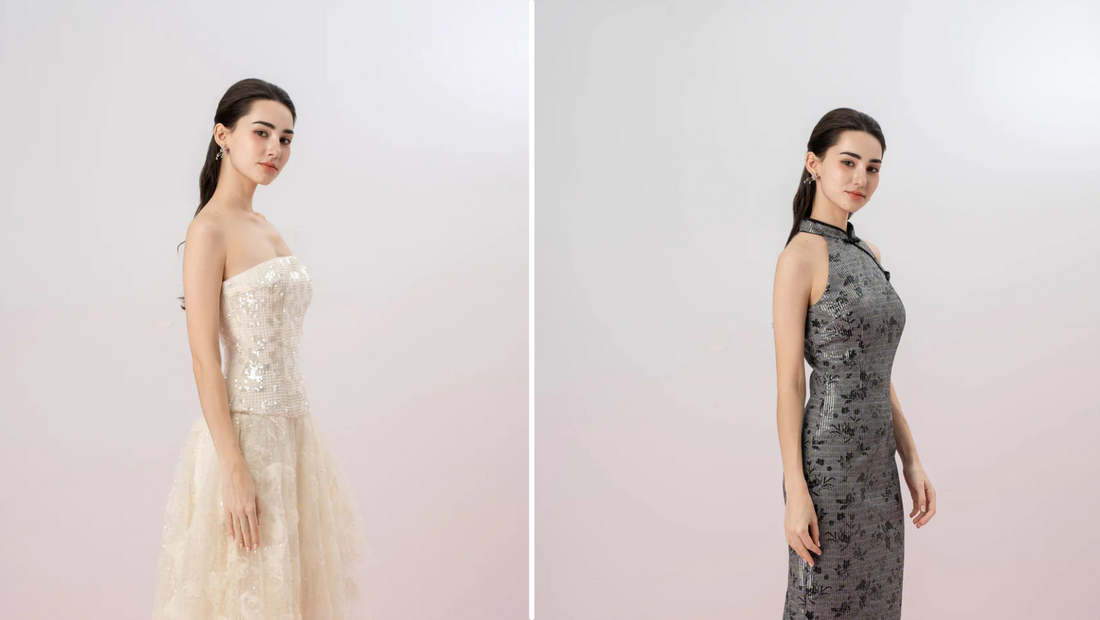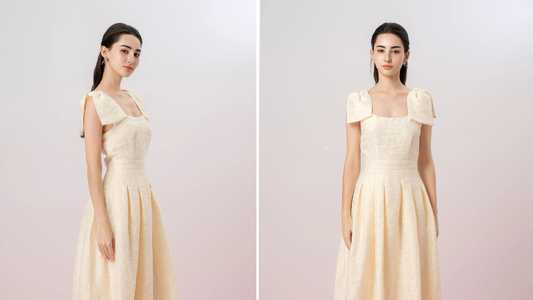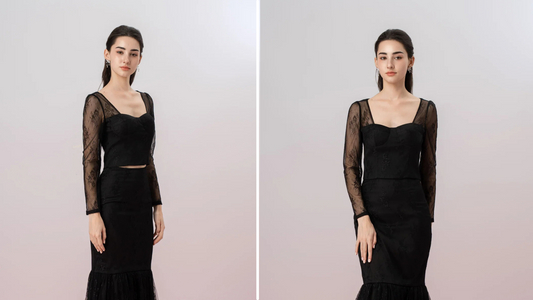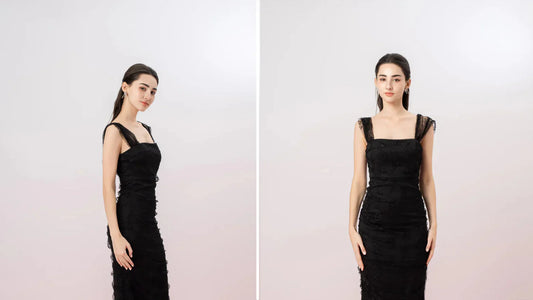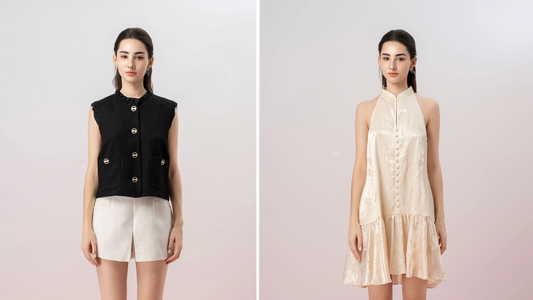When you imagine slipping into a designer dress, it's not just about the cut, the fit, or the color. It’s about how the fabric feels against your skin, how it drapes with effortless grace, and how it carries the weight of both history and modern luxury. Yet, for many, choosing the right fabric for that perfect dress can feel like a daunting decision—one that can make or break the entire look. Best fabrics for designer dresses are not just luxurious; they are the soul of a masterpiece, defining both the elegance and longevity of your investment.
If you've ever found yourself staring at rows of fabric, unsure which to choose for a special occasion, you're not alone. It’s easy to be overwhelmed by the sheer variety of materials out there, each promising something different. You may worry about whether a fabric will stand the test of time, or if it will simply fade into the background of your wardrobe, lost among other fleeting trends. But here’s the thing: when you select the best fabrics for designer dresses, you aren’t just picking a material—you’re investing in a statement that echoes your taste, sophistication, and the timeless elegance that defines you.
This is where Nimisski steps in, offering curated designer pieces made with the finest materials that not only promise luxurious comfort but also stand the test of time. Whether you're searching for the perfect fabric for a gala, wedding, or your next big event, Nimisski brings you closer to the essence of what true luxury is all about.

Luxurious Fabrics for Designer Dresses: Timeless Materials You Should Know
The first step to finding the perfect fabric for a designer dress is understanding what makes each material unique. It's not enough to simply choose a fabric because it looks beautiful—its feel, weight, and structure should complement the overall design. Luxury fabrics aren't just about aesthetics; they embody a lifestyle of elegance, sophistication, and meticulous craftsmanship. For those seeking best fabrics for designer dresses, each material tells its own story, offering both visual and tactile pleasure.
Among the most coveted materials in the fashion world, the following fabrics stand out as pillars of elegance and quality:
- Silk: The epitome of luxury, silk has long been associated with sophistication and grace. It’s lightweight, breathable, and has an unparalleled sheen that catches the light, making it perfect for evening gowns, wedding dresses, and formal occasions. However, silk requires careful handling and regular upkeep to maintain its beauty. It’s delicate, prone to staining, and needs to be cleaned with the utmost care. Yet, when you find the right silk for your designer dress, it’s an investment that pays off in how the fabric drapes and feels on your body. Nimisski carefully sources the finest silks, ensuring you get a fabric that matches your needs—whether it's a delicate chiffon overlay or a full silk satin gown.
- Satin: Often confused with silk, satin is a fabric that exudes a polished, glossy finish. While silk satin is still considered a luxury, modern satin can also be made from synthetic fibers like polyester, which makes it more durable and easier to care for. Satin’s smooth texture and reflective quality make it an excellent choice for formal dresses, cocktail parties, or black-tie galas. It holds structure and shape well, offering both comfort and elegance in one beautiful package.
- Velvet: Rich, luxurious, and tactile, velvet is ideal for colder seasons and evening events. The fabric’s deep color and plush texture make it stand out in a crowd. Velvet is both opulent and comfortable, providing a rich, cozy feel while ensuring a stunning silhouette. However, its thickness requires proper care—frequent brushing and storage in a way that preserves its pile. Velvet dresses from Nimisski are crafted with expert precision, combining the fabric’s natural beauty with functional design to create dresses that offer both luxury and ease.
- Organza: Light, crisp, and transparent, organza offers a delicate and romantic feel. Its sheer quality makes it an excellent choice for overlaying other fabrics, creating ethereal layers of texture. Whether used for a dramatic wedding gown or an elegant evening dress, organza can add volume without feeling heavy. While it’s not as durable as silk or velvet, its delicate beauty is undeniable, and it adds a touch of whimsy to any design.
- Taffeta: Taffeta is known for its crispness and structure. Unlike softer materials that flow effortlessly, taffeta holds its shape and creates a sculptural effect. This fabric is ideal for dresses that require volume, such as ball gowns or cocktail dresses. Taffeta’s slight sheen and crisp texture create a feeling of regality, making it the go-to fabric for formal events. Nimisski’s use of high-quality taffeta ensures that the fabric will not lose its form, even after years of use.
Each of these fabrics comes with its own set of advantages, but choosing the right one depends on the occasion, the desired silhouette, and your personal comfort. Whether you're shopping for a dress that will make a statement at a gala or searching for something classic yet versatile, selecting the best fabrics for designer dresses is key to creating a timeless wardrobe.

How to Choose the Best Fabric for Your Designer Dress: A Personal Approach
Choosing the best fabric isn’t a matter of following trends or simply picking what’s most expensive—it’s about selecting what works best for you and your lifestyle. The best fabrics for designer dresses are those that not only look stunning but also fit your personal aesthetic and needs. For example, if you're attending an outdoor summer wedding in Singapore, you might want to lean toward lightweight fabrics like silk chiffon or linen blends. On the other hand, if you’re preparing for a sophisticated winter gala, heavier materials like velvet or satin will keep you warm and stylish.
Here’s how you can navigate fabric choices with confidence:
- Consider the Occasion: The occasion dictates a lot of what you should look for in a fabric. If it’s a wedding, consider silk or taffeta for its structure. For a more casual evening, satin or velvet could be appropriate. The right fabric will complement the event’s tone and your role within it.
- Match the Fabric to Your Body Type: Fabrics like silk or satin drape beautifully over most body types, offering a flattering, figure-hugging silhouette. Stiffer materials like taffeta, on the other hand, can add volume and structure, making them ideal for those who want a more dramatic look.
- Climate Considerations: Singapore's tropical climate calls for breathable, moisture-wicking fabrics that keep you cool while maintaining a luxurious look. Silks and lightweight chiffons are perfect for the heat, while heavier fabrics are reserved for cooler months or indoor events.
- Sustainability: As more and more consumers consider the environmental impact of their choices, it's worth noting that certain fabrics are more sustainable than others. Nimisski prides itself on sourcing materials that not only meet the highest quality standards but also reflect a commitment to ethical and sustainable practices, so you can feel good about your purchase.
Caring for Your Designer Dress: Ensuring Longevity of Luxurious Fabrics
Once you've chosen the best fabrics for your designer dress, maintaining its beauty and integrity becomes equally important. Designer dresses are not everyday wear; they are cherished pieces, often worn only for special occasions. However, their longevity depends on how you care for them.
- Proper Storage: Always store your dresses in breathable garment bags to avoid dust accumulation. For heavier fabrics like velvet and taffeta, use padded hangers to prevent deformation.
- Gentle Cleaning: Many luxurious fabrics require dry cleaning or hand washing. Always follow the care instructions provided by the designer to preserve the fabric's texture and sheen. Avoid washing delicate fabrics like silk or satin with harsh detergents or in high heat, as this can damage the fibers.

Contact : +65 8787 9226
Opening hours :
Mon - Sun
11am - 9pm
- Regular Maintenance: Fabrics like velvet and satin benefit from periodic brushing or steaming to maintain their fresh look. Always store your dress away from direct sunlight to prevent fading, and ensure that it’s free of stains before storing it for long periods.
With the right care, your designer dress can remain a staple in your wardrobe for years to come.

Ready to Choose Your Perfect Designer Dress?
At Nimisski, we understand that choosing the best fabrics for designer dresses is about more than just luxury; it's about creating an experience that lasts. From the first touch of the fabric to the final fitting, our dresses are designed to embody both beauty and practicality. So, which fabric will you choose for your next timeless piece?

